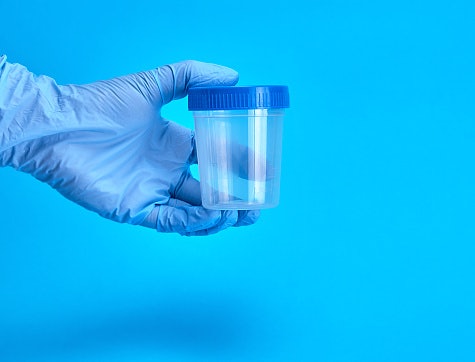
In 2019, Jared* was set to move across the country to start a new job at a clean-energy company.
After he accepted the offer, the company told him he'd need to take a drug test, a requirement he says wasn’t mentioned previously. Jared, who requested to use a different name for this story for privacy reasons, told his new employer that he had a doctor’s note for medical marijuana. (Because the FDA hasn’t approved cannabis for any medical purpose, people typically receive “recommendations” as opposed to formal prescriptions.) Jared used it regularly, and would likely test positive for the drug on a test. A few weeks later, he got the results: As expected, the lab detected THC in his sample. The job offer was rescinded.
Today, workplace drug tests are commonplace, but they can be traced back to 1971 when President Nixon declared a “war on drugs” — a cause President Reagan would later take up and explode in 1982. Reagan advocated strict penalties for even low-level drug offenses, ushering in an era of mass incarceration. The ripple effects of those policies extend beyond prisons — including in the prevalence of workplace drug tests.
These tests are incredibly pervasive, Melissa Moore, director of civil systems reform at the Drug Policy Alliance, tells Inverse. This is true even for a huge swath of jobs that carry no obvious safety concerns. A 2013 analysis published in the American Journal of Addictions found that 40 percent of employers use workplace drug tests, whether in the form of pre-screening or routine testing. A survey published last year by the Bureau of Labor Statistics found that in 2021, only a tiny fraction of workplaces delayed or eliminated drug screening.
“Often you need to pee in a cup to get a job in retail,” says Moore. “It makes no sense, but it’s an extension of really deeply flawed drug war logic that doesn’t look at facts but is really based in stigma and misinformation.”
How did we get here?
The first routine drug-testing program in the United States was pioneered in horses. Doping was a perennial problem in horse racing. According to a 1933 story published in The Associated Press, there was a surge that year in the number of U.S. states that legally allowed horse betting, resulting in an increase in doping — and efforts to crack down on that cheating. The newly established Federal Bureau of Narcotics — which later became the DEA — invested significant resources to combat it. And in 1934, Hialeah Race Track in Texas became the first track in the country to implement a testing system at the track. Others quickly followed suit.
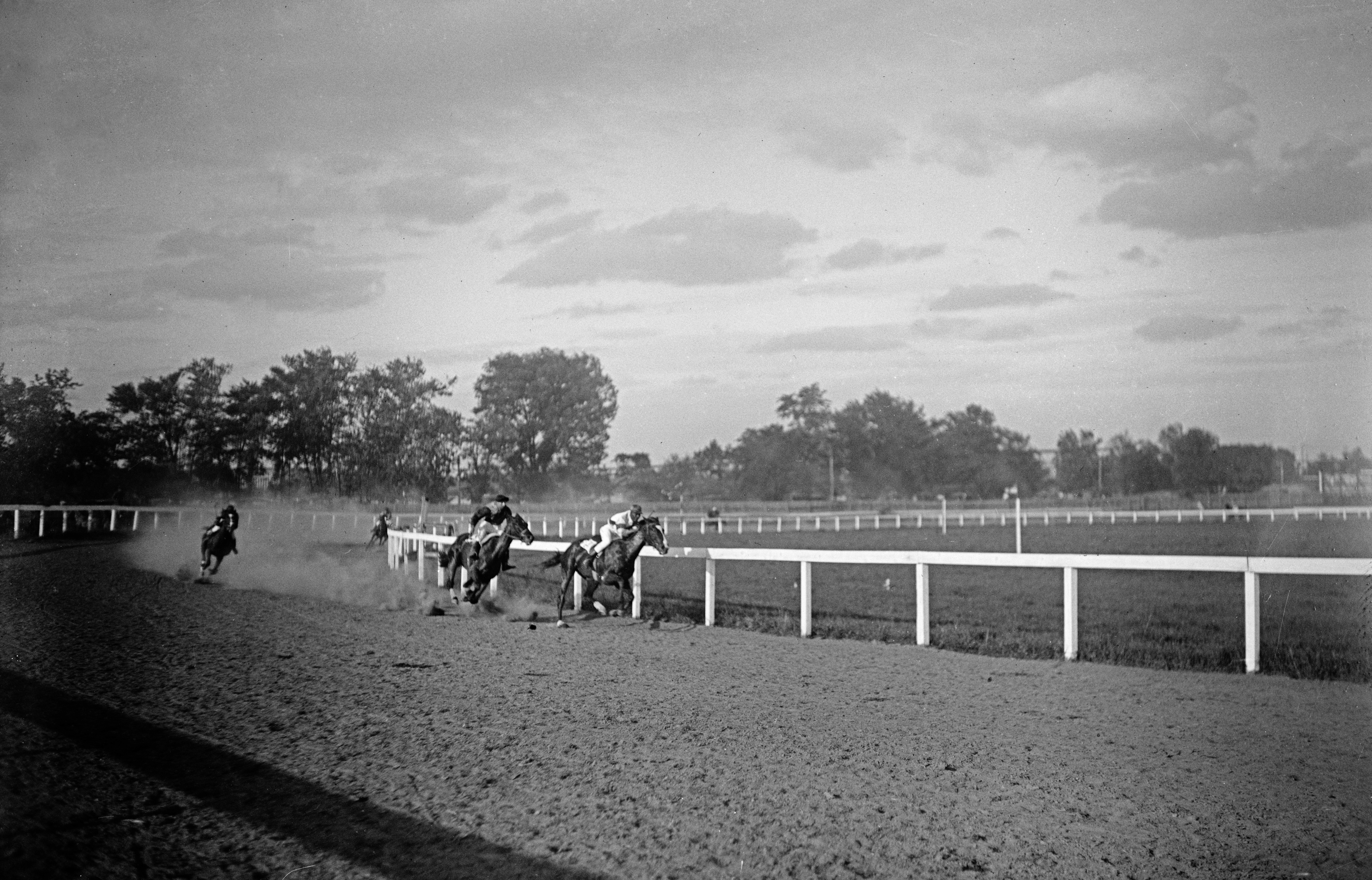
Drug testing made its way into human workplaces first via the Department of Defense when, in 1971, Nixon ordered veterans returning from Vietnam to undergo drug testing. Ostensibly, this was because so many veterans returned home dependent on opiates and cannabis and the DOD wanted to identify who needed “rehabilitation.”
Notably, drug testing has always been predicated on the idea that simply having the metabolite of a drug in one’s system is evidence of addiction.
In 1984, the Department of Defense issued DoD Directive 1010.1, which formally defined forensic drug testing requirements and responsibilities for testing. On Sept. 15, 1986, President Reagan issued Executive Order 12564 mandating drug testing for all civilian federal employees. Two years later, Congress passed the Drug-Free Workplace Act of 1988, which outlined drug testing regulations for businesses receiving federal contracts; many other businesses followed suit.
In 1991, Congress passed the Omnibus Transportation Employee Testing Act, which requires drug testing for all “safety-sensitive employees” in the transportation industry. The Department of Transportation oversees mandatory random drug testing and pre-screening for employees in trucking, railroads, aviation, pipeline, public transit, and other transportation-related industries.
Today, every state in the nation allows drug testing in certain job settings, and 18 states allow employee drug testing in both the public and private sectors. The tests are legal at the federal and state level, but each state has different laws governing how and when employers can test current and potential employees. Still, the legal issues raised are murky and often contradictory.
Leo Beletsky is an assistant professor of law and health sciences at Northeastern University and faculty director of the harm reduction organization Health in Justice. He tells Inverse that one of the many baffling aspects of the widespread acceptance of workplace drug tests in the United States is the jurisprudential history of favoring both individual and privacy rights.
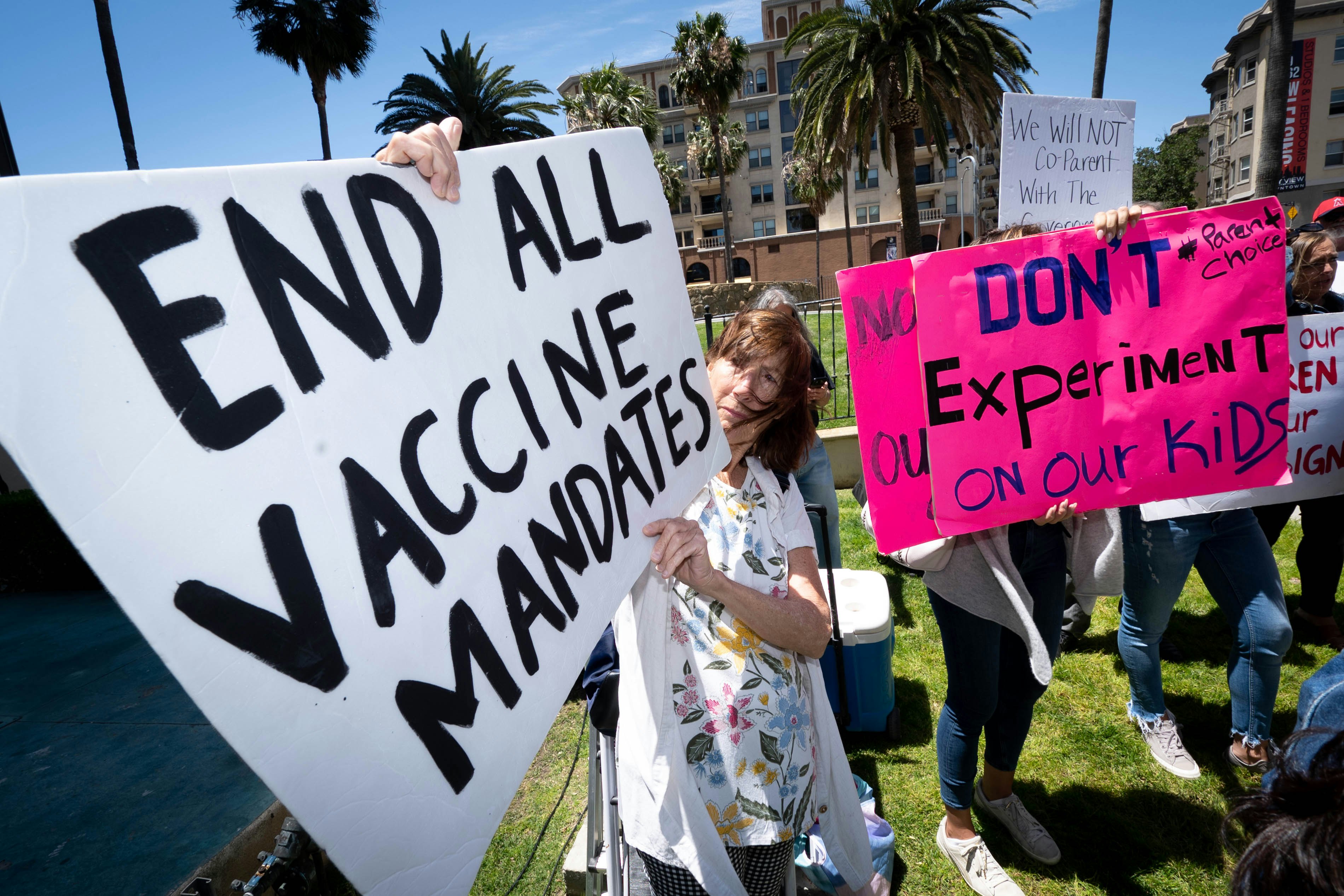
“It’s notable that the Supreme Court ruled against vaccine mandates in the workplace,” he says of the decision that prohibited mandates for federal employees. “That has a much more direct impact on workplace safety but was for some reason deemed a bridge too far. Yet this pervasive and invasive drug testing that has really no bearing on workplace performance or safety is so unquestioned.”
Workplace drug tests are not unique to the United States, but it’s much more common here than in other countries. In Canada, for instance, about 10 percent of companies drug test, according to a 2006 survey, and in 2013, the Supreme Court of Canada ruled that random drug tests — including in “safety-sensitive” situations — are a violation of privacy and are prohibited throughout the country.
What do workplace drug tests tell you?
Organizations that implement or perform workplace drug tests often claim that testing increases productivity and guarantees employee safety. This reasoning is also how Reagan justified his 1986 drug-free workplace initiative. The theory goes that sober employees are better able to do their jobs and do them safely. This logic is one of the reasons the U.S. Department of Transportation mandates drug testing for all employees.
Employers typically test for the five most commonly used drugs: cannabis (specifically THC, the psychoactive cannabinoid in cannabis), cocaine, opiates, amphetamines, and phencyclidine (PCP). Drug tests detect metabolites — secondary chemicals produced by the body when one takes a drug — in different bodily fluids; in workplaces, that usually means urine. Metabolites are detectable in urine for anywhere from hours following use (cocaine) to weeks (cannabis). Other tests, like hair follicle tests, can detect metabolites for even longer after the drug was actually taken; for cannabis, for example, it’s about 90 days.
Besides alcohol, there is no drug test that can tell if a person is under the influence of a drug at the moment the test is taken.
This fact is what Jasmin Reggler found so outrageous when, in December of 2019, her job offer to be a legislative aide to a newly elected Rochester city council member, Mary Lupien, was rescinded.
Reggler tells Inverse: “She asked me to be her aide after the November election. For the whole month of December, I went with her to all of the meetings, met with the city officials, everything was fine.”

“I never went to work high. I never smelled of cannabis. I did that for a whole month. Then at the end of December, my drug test came back, it was positive for THC. And from that moment, it was like you're done. You can't have this job… They didn't check any of my references.''
According to Reggler, her employment hinged on the test. Elected officials, on the other hand, are not subject to drug testing.
Mary Lupien, who is now serving as vice president of the council, tells Inverse she was “surprised to hear that we're still testing for THC. And all of my colleagues were as well.”
“Jasmin and I met when our kids were very young and we really helped each other out, traded child care, that kind of thing. So when I was elected, we talked about how working together might work. And I felt so reassured that with her on my team, it was going to be great.”
When Inverse reached out to the Rochester City Council for comment, a spokesperson responded to our emails that they didn’t have anything to add to Lupien’s comments.
There is scant data supporting claims drug testing makes workplaces safer, drug policy expert Melissa Moore says.
“There is no research indicating that workplace drug testing has any sort of impact on workplace safety. In states with legalized cannabis, for example, we haven't seen any sort of dramatic changes in workplace incidents,” she explains.
In a 2020 review published in the journal Occupational Medicine, researchers found “no evidence that cannabis users experienced higher rates of work-related injuries.”
False positives are also possible with drug testing. Between 5 and 10 percent of drug tests result in false positives. Often this is the result of lab error, but certain medications or even foods can trigger false positives.
At the same time, drug testing policies often have disturbing racial disparities. A 2013 Yale School of Medicine study found that Black and Hispanic workers were more likely than white workers to be employed in a workplace that requires drug testing.
What workplace drug tests can’t tell you
Employers conduct workplace drug tests in a variety of ways, and what’s allowed can change by state. At the federal level, six types of drug tests are permitted in certain situations:
- Pre-employment testing.
- Random testing.
- Post-accident testing.
- “Reasonable suspicion” testing. (The statutes for what determines “reasonable suspicion” vary by location, but they can be as general as “employee acting erratic” to “information received from a reliable or credible source.”)
- Return to duty testing. (Testing following a suspension due to a positive test.)
- Follow-up testing.
Joe Reilly, president of National Drug Screening, an organization that offers drug testing services to employers, tells Inverse that the organization “has about 4,000 employer clients. Typically, they all do pre-employment, post-accident testing, and reasonable suspicion testing.”
In the U.S., Reilly says, “the majority of drug tests for employment are pre-employment drug tests.”
Notions of workplace safety make less sense in the context of pre-screening tests: By definition, a positive pre-employment drug test means drugs were used outside the workplace and prior to being employed by the company. It does, however, underscore the moral assumptions and financial incentives inherent in workplace drug testing: Anyone using a drug outside of work and prior to their employment is assumed to be more likely to come to work under the influence of that drug and pose a liability to the company.
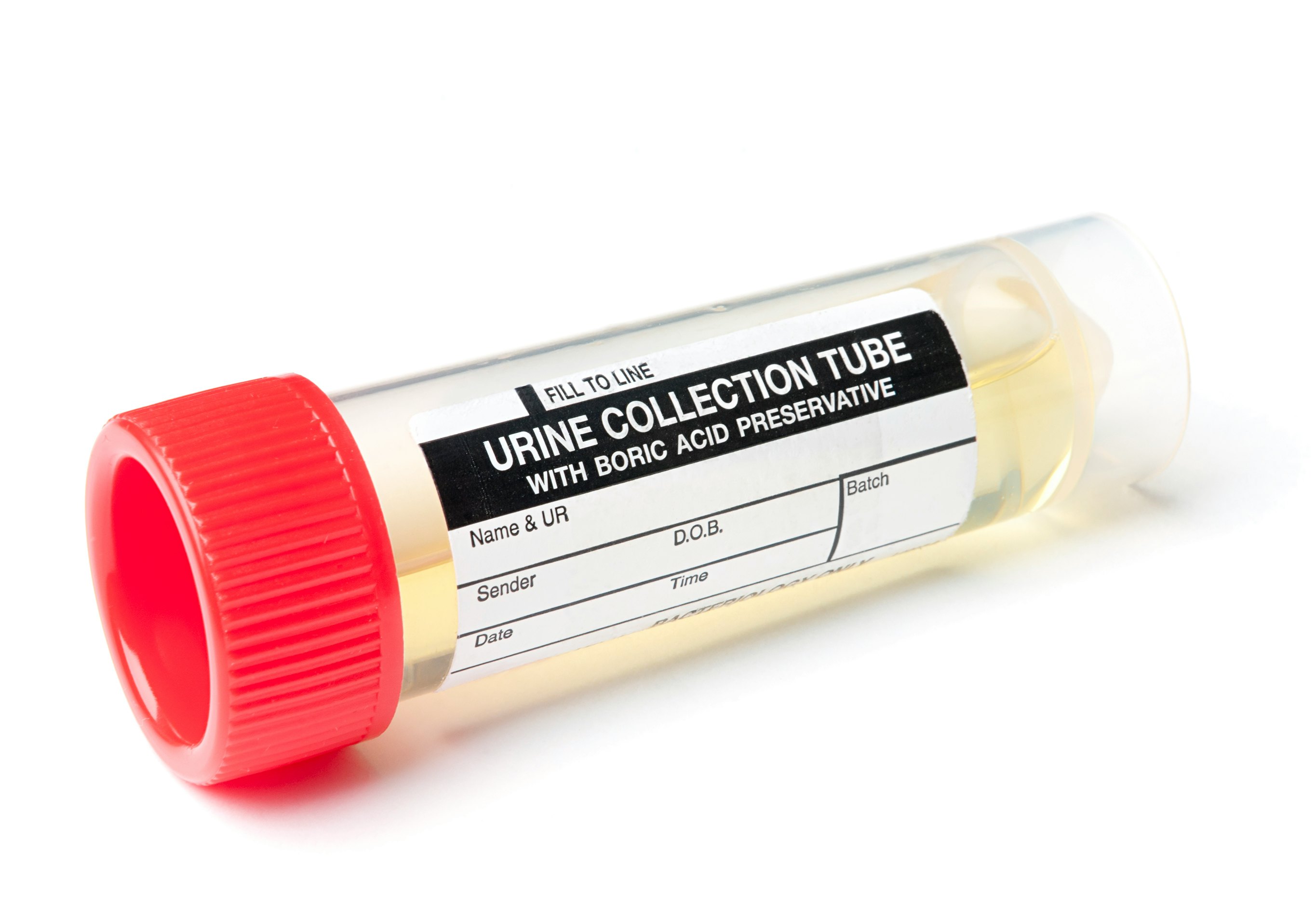
Some companies say that testing current employees encourages them to seek treatment for a substance use disorder, but Beletsky says that assumption is not borne out by science either.
“If people know there’s a possibility they can be fired for their substance use, they’re not going to come forward and seek help if they need it,” he says. “And if [someone with a substance use disorder] has their employment terminated because of their drug use, it may well get worse.”
Incentives for workplace drug testing
Drug testing policies are often administered under the guise of safety, but there are real financial incentives. Discounts on workers’ compensation plans and corporate insurance have led many companies to institute drug-free workplace policies even though they are not subject to federal mandates.
“There’s a huge financial gain [for employers] to do after-accident drug testing,” Reilly says. “If the employee tests positive, there’s the potential ability to deny a worker’s [compensation] claim. So there’s a big incentive to do testing.”
Drug testing companies also have a big monetary incentive to encourage workplace drug testing.
“There are billions of dollars in drug testing,” Beletsky says.
Over $8 billion, in fact. In 2020, the global drug testing market was $8.1 billion; that’s expected to reach $11.7 billion by 2028.
Drug testing employees may benefit a company’s bottom line in some cases, but there are myriad ways it can do the opposite. If the vast majority of people in the country say they’ve tried cannabis, which is increasingly legal at the state level, conditioning employment on a negative drug test inevitably harms the economy.
Indeed, companies like Amazon have taken small steps toward reducing pre-employment drug tests for jobs not regulated by the U.S. Department of Transportation.
But a functioning transportation industry is still essential to the economy. In February, Chris Harvey, head of equity strategy at Wells Fargo Securities, told investors he believed the federal Department of Transportation marijuana testing mandate was to blame for trucker shortages and rising costs.
Carl Quintanilla, a journalist for CNBC, recalled part of Harvey’s comments, writing, “The #1 reason for the trucker shortage, according to a Wells Fargo conference call: marijuana testing.”
A spokesperson for Wells Fargo confirmed the comments to Inverse.
That analysis was further corroborated by Business Insider as well as when the New York Post reported that the supply chain was being stalled by 72,000 truckers who failed drug tests. More recently, data published by the Drug and Alcohol Clearinghouse, which contains information about holders of commercial driver's licenses and commercial learner's permits covered by the Federal Motor Carrier Safety Administration, show that, between Jan. 6, 2020, and Sept. 1 of this year, there were more than 88,648 positive tests for marijuana metabolites.
A better path forward
Companies aren’t the only institutions slowly doing away with marijuana drug testing. In 2019, the nonprofit Drug Policy Alliance worked with New York City Council on a “#MarijuanaJustice” legislation package that banned cannabis drug tests as grounds for employment denial. The law took effect at the beginning of 2020.
But the legislation couldn’t save Jasmin Reggler’s job: it hadn’t taken effect when her job offer was rescinded, and she was in Rochester, not NYC.
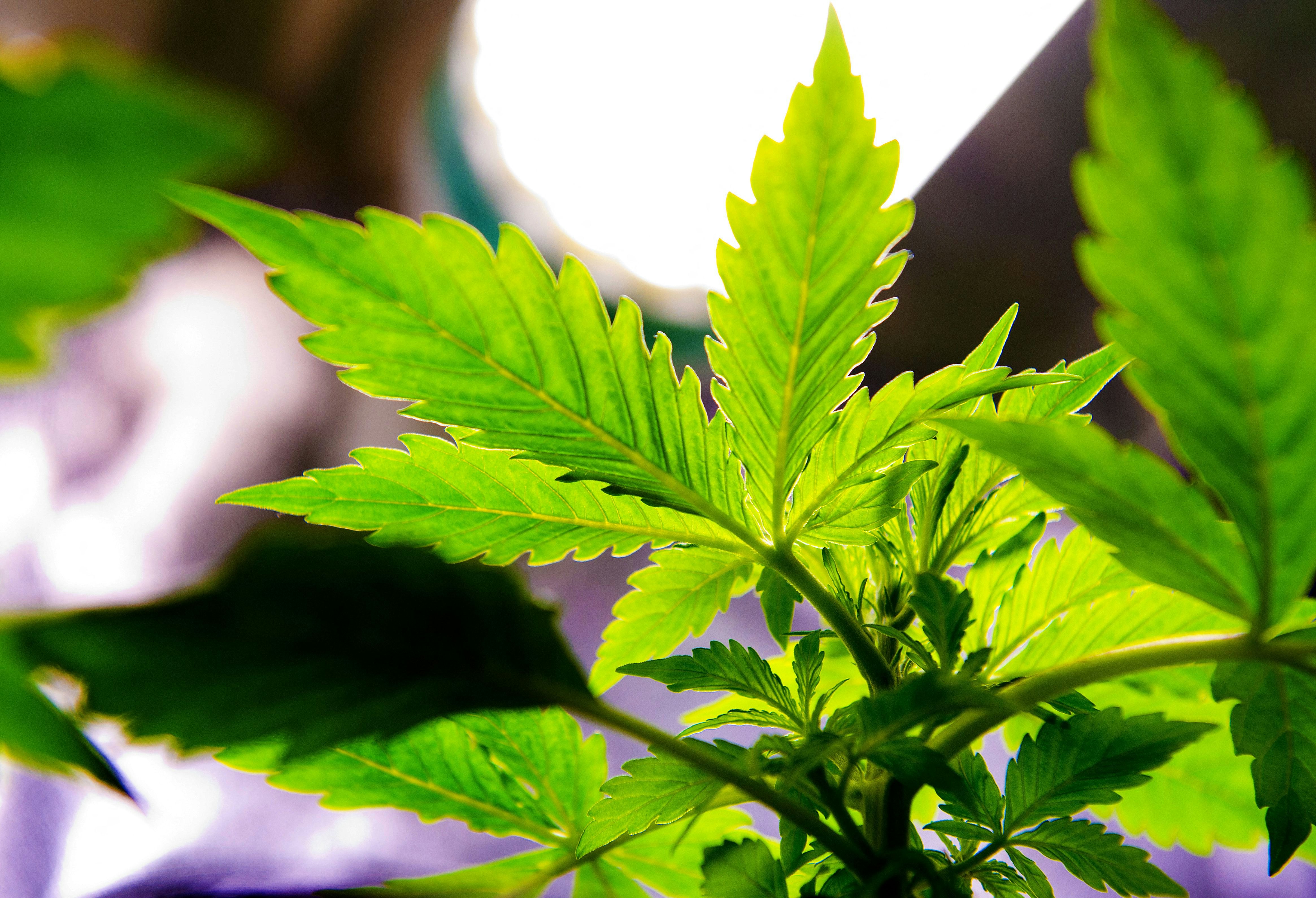
The night she found out her job offer was revoked — New Year’s Eve 2019 — Reggler sat down to write a letter to both the mayor of Rochester and its city council president.
“I was just pointing out how the city is really only testing for THC because after they tell you that you have to take a drug test, you have up to five days to do it. Every other drug they test for [typically] leaves your [urine] within five days,” she says.
Reggler was fortunate to be able to fall back on her existing employment when the offer was rescinded, but she felt compelled to write the letter on the behalf of people who don’t have that luxury.
“Even though everyone [on city council] agreed testing for THC shouldn’t be happening,” Reggler’s would-be employer Lupien says, “it still took five months of Jasmin’s advocacy to make a change happen.”
Ultimately, Reggler prevailed. In May 2020, the city of Rochester passed a resolution saying they would no longer test for THC among prospective employees.
In 2021, New York passed MTRA, a bill permitting the recreational sale and use of cannabis; they folded in some of the drug testing legislation pioneered in New York City and Rochester. With a few exceptions, employers in the state of New York can no longer test current or potential applicants for THC. Exceptions include “safety-sensitive” positions like jobs requiring the operation of heavy equipment and roles regulated by the federal Department of Transportation.
The reforms have gaps that concern some labor experts.
Employers can still take action against employees in some situations, as the New York Department of Labor states on its website:
An employer is not prohibited from taking employment action against an employee if the employee is impaired by cannabis while working (including where the employer has not adopted an explicit policy prohibiting use), meaning the employee manifests specific articulable symptoms of impairment that:
• Decrease or lessen the performance of their duties or tasks.
• Interfere with an employer’s obligation to provide a safe and healthy workplace, free from recognized hazards, as required by state and federal occupational safety and health laws.
The “specific, articulable symptoms of impairment” don’t include a positive drug test, Esta Bigler, director of the ILR School’s Labor and Employment Law Program, tells Inverse. “Because it’s not a sign of impairment at work.” The ILR (Industrial and Labor Relations) School is part of Cornell University.
While New York’s legislation is a step forward, Bigler still has two primary concerns.
“One, every workplace is different. What may be considered reckless or unsafe on a construction site might be different than working in my office. So we have no pure definitions, and we have no test like we do for alcohol to see if someone is currently impaired,” she says. “My other worry is that this is in the hands of supervisors and employers. People have implicit bias and stereotypes in their head.”
Bigler gives an example of a real case that resulted in drug testing because it occurred prior to testing restrictions but could potentially happen anytime an employer determines who is showing “symptoms of impairment.”
“Two employees have a dispute and get really loud. One employee is a person of color, and the other is white. The fight is actually started by the white employee. The white supervisor comes over to separate them. Who do you think they drug test? The employee of color,” she says.
Those same biases and stereotypes can appear when an employer determines who is demonstrating “clear and articulable symptoms of impairment.”
“There’s going to need to be some training for supervisors,” she says.
Even with those concerns, Bigler says the New York State law is “a vast improvement.”
In 2020, Nevada also curbed testing for cannabis in pre-employment drug tests. A similar bill passed in California last month but has not yet taken effect.
Grassroots groups are ramping up their advocacy around this issue as well. Health in Justice, the organization with which Beletsky is affiliated, has launched a “Drug War Free Workplace Pledge” asking employers to commit to creating workplaces free of drug testing “except in situations in which it is necessary, such as to comply with federal law.”
A straightforward, just, and economically-wise system would focus on employees’ performance and screen applicants based on their qualifications, the experts Inverse spoke with say. After all, it’s the one real measure of what employers want to know: How well can you do the job?
Editor's note: An earlier version of this story stated that in 1933 the U.S. legalized horse betting when, in fact, this was on a state level, not a federal level. 1933 saw a surge in the number of states that made horse betting legal.
!["[T]he First and Fifth Amendments Require ICE to Provide Information About the Whereabouts of a Detained Person"](https://images.inkl.com/s3/publisher/cover/212/reason-cover.png?w=600)






